In the last decade, window and door structures are especially popular ...
|
|
How to build a chicken coop in the country is a question that sooner or later begins ... |
An integral stage of any construction and finishing work is a check and ... |
DIY water supply insulation
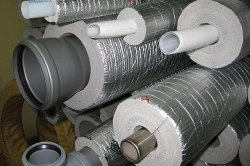
It is difficult to imagine a comfortable accommodation in a house without constant water supply. However, many owners of their own houses and cottages in the winter are faced with freezing of water pipelines. At the same time, the frost does not spare neither steel galvanized pipes of high quality, nor metal -plastic products from the best manufacturers, tearing all pipes equally hard. You can avoid such a sad outcome if you make insulation of water pipes in a timely manner.
Content:
- The need to warm the water supply
- Materials for insulation of water supply pipes
- Ways to insulate the water supply underground
- DIY water insulation
The need to warm the water supply
So, you understand the need for insulation of the water supply in your house. Given the fact that the site is not kilometers of pipes, the industrial scale of work will not be needed. Remember that the depth of the pipe run should reach half a meter. Of course, the more this indicator, the risks that you will be left in the winter without water. But even if you have withstood this parameter when installing the water supply, it is best to insulate it additionally.
Particular attention should be paid to the procedure for insulation of water pipes in non -heated rooms and on the street, since these places are the most vulnerable to freezing. If it is not so difficult to insulate the water supply inside the construction, then the thermal insulation of the pipes that are located on the street, especially in places where they are in contact with pumps, meters, as well as in distribution wells, will take more time and effort.
Materials for insulation of water supply pipes
The time has long passed when the water supply was insulated using fufaks, cotton blankets and other improvised materials. Today, there are many thermal insulation materials on sale. That is why it is so important to be able to choose the right insulation and know what to pay attention to first. It is recommended to buy material for insulation of pipes based on its basic characteristics and ease of installation.
When choosing a heater, remember that it must meet the following requirements:
- have a low level of thermal conductivity and have good heat -saving properties;
- be durable and resistant to chemical and biological influences of environmental factors;
- have a minimum water absorption coefficient (high water -repellent properties), since moisturizing the material significantly increases the indicators of its thermal conductivity;
- work at high temperature without losing their structure and own physical properties.
Knowing the basic properties of insulation and features of the location of water pipes on the land plot, you can make the optimal selection of the heat insulator for insulation of water pipes. Mostly they are recommended to be laid for insulation of the water supply indoors.
Let's look at which heaters are intended for insulation of the water pipe:
- Glass wool. Fiberglass heaters are used mainly for insulation of metal -plastic pipes. Of popular brands, fiberglass Ursa, KNAUF and ISOVER are distinguished. The glass wool is characterized by a low density, when using this material for thermal insulation of pipes, it is recommended to lay additional external insulators as roofing material or fiberglass. And this already promises you additional temporary and material costs.
- Basalt insulation. This type of heater is performed in the form of cylinders, which differ in the ease of installation. The fiber for additional protection is covered with a layer of roofing material, foilizol or parcham. Despite the obvious advantages, the cost of such insulation is not very democratic.
- Foam polystyrene. This insulation is the most popular material during self -insulation of the water supply. Polistyal heat -insulating shells are with or without outer coating. This thermal insulation material is designed for reusable use for insulation of water pipes on the street and indoors.
- Thermal insulation paint. This is a pasty mass of gray or white, which is an innovative product in the domestic construction market. Such a composition based on varnish or water with the addition of acrylic dispersion and fillers is made. It is best to apply thermal insulation paint by means of a sprayer. The thicker you make a layer of paint, the thermal insulation of the pipe will be higher. The paint is able to withstand high and low temperatures and has anti -corrosion properties. By the way, one layer of paint is able to replace polystyrene foam or glass wool.
Ways to insulate the water supply underground
Above, we examined the materials that are used to warm pipes outside and indoors. Some of the heat insulators can be used underground. However, insulation in this way is not always easy and has a lot of disadvantages. And therefore, it is worth paying attention to the alternative methods of insulation of water pipes in the ground, when there is no need to lay pipes at a considerable depth.
Let's take a closer look at these methods and find out how to properly insulate watering pipes with their help:
- Heating cable. The insulation occurs by heating the pipeline using a cable, the power of which is an average of 10-20 W per meter linear, inside and outside the pipe. Since the winter time lasts only a few months, the process of insulation is necessary exclusively at this time: the heating cable will be included only in such months. When using the pipe insulation, you can not lay to a depth of 2 meters, it is enough to delve into only 50 centimeters.
- Warming of pipes with air. In this case, you can use materials that were listed above polystyrene and basalt materials. The essence of the method is the insulation of the pipes with air, which comes from below, and the creation of the so -called umbrella from cold air, which comes from above. The pipe is placed in a cylindrical insulation material. The result is something like a pipe in the pipe.
- Insulation of water pipes with high pressure. Within the framework of this technique, a receiver is cut into the tap system, where pressure is pumped. This method will best work on submersible pumps, because they have the pressure necessary for the system (close to 5 atmospheres). But in order for the entire system to find himself under pressure, immediately after the pump, the check valve is immediately installed.
DIY water insulation
In all insulations that are used today to heat the water supply, the principle of action is exactly the same. The choice of certain thermal insulation will depend on the place of placement of your water supply and the water -repellent properties of the material.
The use of thermal insulation materials
With the help of fiberglass, the pipes are wrapped, and then fix the winding with a plastic tape. Next, it is worth equipping waterproofing using roofing material or other similar materials. However, it is not recommended to insulate the pipes that are placed underground, fiberglass materials are not recommended. Firstly, with this method of insulation, you will have to equip two layers: the insulation itself and the casing, which consists of a winding for this heat insulator with some waterproofing material. And this is quite a long and dreary, which leads to a rise in the cost of water insulation.
Since the density of such heat -insulating materials is small, the thickness of the insulation during reverse backfill of the trench will be violated in height, that is, the material will simply get clenched under the weight of the soil, and this process can last not only one season. As a result, the thickness of the insulation will not be enough to create high -quality insulation of the water supply underground.
If you are filling the pipes with layer -by -layer tamping, then this will only accelerate the process. With insufficient depth of the water supply, after prolonged autumn rains, surface water will probably reach the heat insulator through loose soil (after the backfill), and it is unlikely to dry to the winter.
Thermal insulation shells made of basalt fiber or polystyrene foam are mounted quickly and simple. Half of the polystyrene foam of a certain diameter are put on a water pipe with a displacement of 100 millimeters relative to each other, previously fixed with tape. The displacement relative to each other is required for the overlap, which reaches 10 - 20 centimeters. For insulation of corners, components and turns of the system, it is customary to use shaped shells.
The advantages of this method of insulation of water supply pipes of polystyrene water supply is that the water absorption indicator in 24 hours reaches only 0.5 - 2.0% in volume, so the insulation does not get wet and is not destroyed under the influence of moisture, like glass wool. When filling the trench, the polystyrene foam will not be crushed and wet when surface water is imbued through the soil. The same technique of insulation can be used when passing the water supply through an unheated room.
The use of a heating cable
Consider the organization of heating of the water supply using a special cable. I immediately want to make a reservation that this is expensive pleasure, although if you mount the pipes yourself, you can save significantly. There are two types of water supply by cable. The wire in the first case takes place inside the pipe, but the installation procedure is quite complicated, and it will not be very difficult to cope with this.
In the second case, the wire passes over the pipe, but the power and its length are calculated before the installation of thermal insulation material. Installing it with your own hands is much easier. By the way, on sale there are ready-made sets for arranging a water supply, consisting of a pipe with an mounted heating cable and a heat-insulating material or without a wire, but with a cable-channel made for it.
If you use this method of heating the pipes, then you do not have to deepen the water supply for 2 2.5 meters, 50 centimeters are enough. This will require the following materials: plumbing and foil tape, a waterproof insulation, a self -regulating cable for insulation of water pipes, which has a capacity of at least 20 watts per meter. In addition, the heating cable allows not only the pipes not to freeze, but also quickly defrost them.
The process of warming the water supply with a warming cable occurs in the following sequence:
- Along the pipe, which passes to the house from the well, in a spiral you need to glue foil tape. It is not glued too tight that the wire holds when performing the winding on the pipe.
- After that, it is necessary to lay the heating cable according to a spiral prepared in advance in a step of 10 15 centimeters.
- On top of the cable, foil tape should also be glued, which will ensure the fixation of the wire.
- The insulation must be cut along and wrapped around the pipe. At the same time, it is necessary to carefully monitor the coincidence of all seams between the wire and the insulation, which will help prevent the appearance of cold bridges.
- Next, take a plumbing tape and very tightly wrap the entire pipe over the material of the insulation. Remember that the winding with plumbing adhesive tape is required, as it helps to prevent the penetration of soil water through the gaps present.
- After you reached the places of the water supply from the ground and the entrance to the house, there is a need to use additional windings, which can be done in several ways: through additional insulation of cold water pipes using a polyethylene film and the arrangement around the pipes of the box of the box, where there will be To fill up the insulation. The upper part of the box is also closed with a protective coating, for example, a wind and moisture-proof film, sewn after installation.
Now it is increasingly customary to set the point of temperature data on the heat -hearing cable. It is enough to put 3-4 sensors on the highway so that you can control manually or in automatic mode. For example, if the temperature drops below 5 degrees above zero, the system will turn on the voice notification and send a message to e -mail or mobile phone. You can also provide automatic inclusion of the heating system when the specified parameters are reached.
Secrets of proper insulation of the water supply
It is imperative to draw up a detailed scheme of underground water communications in the house and on the land plot, as well as pay close attention to connecting elements. Remember that only one small drop of water that froze in the thread can break them. And pipes, in turn, should not be subjected to the corrosion process, the most optimal option is metal -plastic.
It is recommended to insulate and heat all sections of the pipeline, which are at a negative temperature. This applies to premises in the house, for example, unheated basements, and the places of entering pipes into buildings. One of the methods of insulation of water supply pipes at the cottage at the entrance site is the following: short sections of the water supply up to 0.5 meters, which remained not insulated, place in a larger diameter.
To do this, it is customary to use sewer pipes from PVC with a diameter of 100 - 150 millimeters, sawing it along in advance. Next, you should specify and fix everything with tape. Drill several holes in height, fill the space between the pipes with construction foam from the spray can. As you fill out the holes, you can with the same tape.
Remember, warm water pipes in the winter become objects of increased attention from various rodents of moles, rats and other living creatures. They are able to easily warm up the insulation, asbestos and plastic pipes, considering them the most suitable warm place. You can protect water pipes from them by plastering them with a solution with broken glass, wrapping them with a metal mesh, or using a metal sleeve.
This is where the pipe insulation procedure is completed. The pipe, with the correct execution of the instructions, will last a long time and at the highest level, without fear of severe frosts. I would like to recall once again that insulation of the water supply should be carried out in a timely manner, without waiting for a gap as a result of freezing of water. Always take into account the water -repellent properties, durability and compliance of thermal insulation material with the requirements of fire safety.

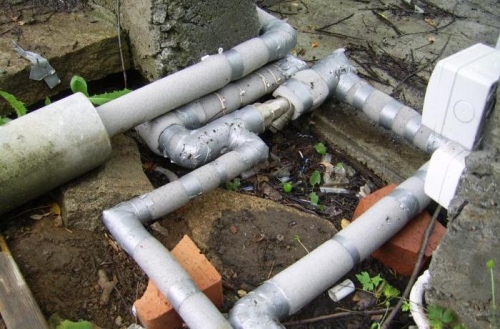
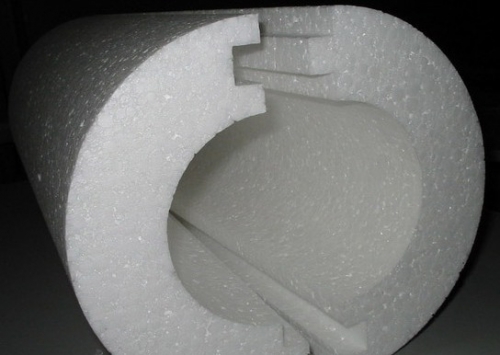
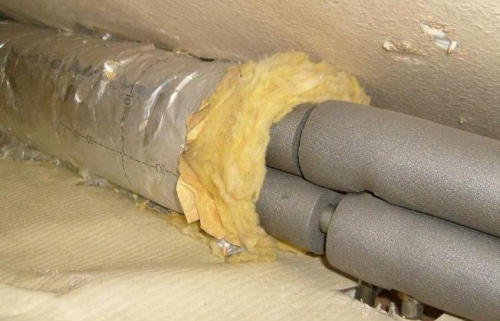
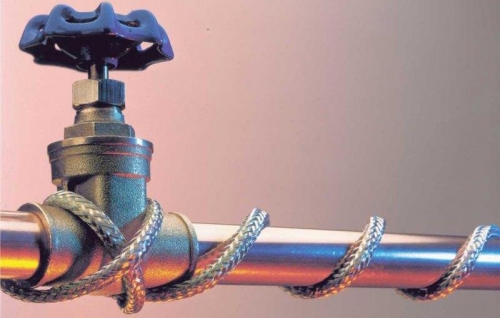
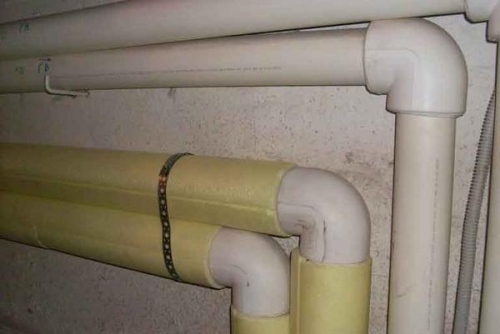
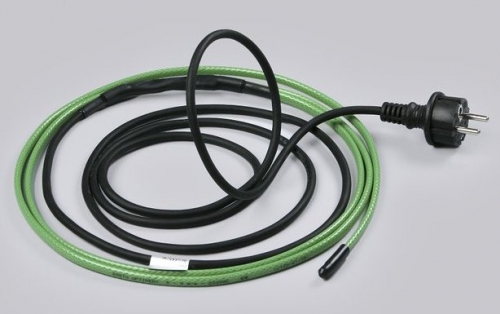
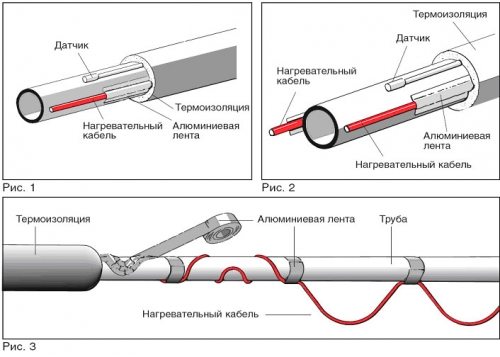
Thank you! Everything is very clear!
Thank you! Everything is very clear!
If we are talking about insulation
If we are talking about warming old pipes, then the option is quite acceptable. But if it is necessary to mount new ones and then insulate them, then of course it is better to put the rhinestones in the insulation PPU. At least we did this by ordering the necessary amounts of pre -zated pipes through http://uzti.su/
This winter is promised -30. Pipes
This winter is promised -30. The pipes are insulated with glassy. Wood half a meter. Do not freeze at this temperature?
Thank you. Good article!
Thank you. Good article! I'm going to lay a warm pipe with a heating cable from a well from a well to the house.
The best service that
The best service that I met. http: //polymir.com.ua/produktsiya/truby-vodoprovodnye-dlya-skvazhin-iz-p ... Everything is orginized, clearly and most importantly, high-quality and not expensive! I advise you!